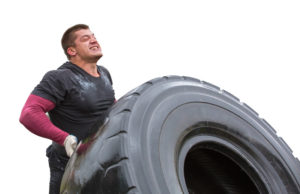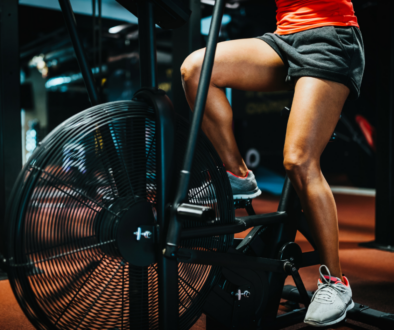What is Fitness? Part 5: Power
 Power is the ability to produce maximal force in minimal time or strength x speed. Strength is the amount of force a muscle can exert against an external load. And speed is the ability to perform a movement or travel a set distance as fast as possible. Unlike other components of fitness (cardiorespiratory fitness, flexibility, strength, and balance), power is not required for general health goals.
Power is the ability to produce maximal force in minimal time or strength x speed. Strength is the amount of force a muscle can exert against an external load. And speed is the ability to perform a movement or travel a set distance as fast as possible. Unlike other components of fitness (cardiorespiratory fitness, flexibility, strength, and balance), power is not required for general health goals.
 Power plus the barbell equals the Snatch and the Clean and Jerk. The competitive sport is called Weightlifting and is an Olympic event. Remember that the competitive sport of strength involves the squat, deadlift, and bench press, is not an Olympic event, and just to keep it confusing, is called Powerlifting. While the term weightlifting specifically refers to the Olympic sport of only two lifts, it has become a blanket term used to cover just about anything happening at the gym. For clarification, the Snatch and the Clean and Jerk are often called Olympic lifting or Oly lifting.
Power plus the barbell equals the Snatch and the Clean and Jerk. The competitive sport is called Weightlifting and is an Olympic event. Remember that the competitive sport of strength involves the squat, deadlift, and bench press, is not an Olympic event, and just to keep it confusing, is called Powerlifting. While the term weightlifting specifically refers to the Olympic sport of only two lifts, it has become a blanket term used to cover just about anything happening at the gym. For clarification, the Snatch and the Clean and Jerk are often called Olympic lifting or Oly lifting.
Other examples of power sports are the Strongman and Strongwomen competition (with events like the keg toss, tire flips, and atlas stones) and Boxing. These require both strength and speed. Athletes in other sports, like Football, Track and Field, Basketball, and Rowing, benefit from cross training with power movements like the Olympic lifts, and other exercises that combine strength and speed, such as kettlebell or medicine ball training, and plyometrics.
 You do not need to be a professional or competitive athlete to train for power. Power training, done in high volume (many repetitions) will improve your cardiorespiratory fitness, which is vital to your health. It can also keep your fitness routine fun and challenging. If high-impact exercises aren’t the best for your body, try kettlebell training. If you’re bored with indoor cycling or the treadmill, try plyometrics or Olympics lifts to get your heartrate elevated. Got some stress you want to release at the gym? Slam a medicine ball a few dozen times and see how much better you feel.
You do not need to be a professional or competitive athlete to train for power. Power training, done in high volume (many repetitions) will improve your cardiorespiratory fitness, which is vital to your health. It can also keep your fitness routine fun and challenging. If high-impact exercises aren’t the best for your body, try kettlebell training. If you’re bored with indoor cycling or the treadmill, try plyometrics or Olympics lifts to get your heartrate elevated. Got some stress you want to release at the gym? Slam a medicine ball a few dozen times and see how much better you feel.
It’s important to respect power movements. To the average gym-goer watching videos online, the movements may look haphazard. They are in fact highly technical. Power movements should not be attempted without a solid foundation of strength (especially core strength) and balance. As these movements can pose a greater risk of injury, they should be learned from a qualified professional and practiced regularly. Always prioritize technique over heavier weight, additional sets or repetitions, and advanced progressions.
Up next, Speed, Agility, and Quickness.
Alicia Cross is a Certified Personal Trainer, Wellness Coach, and Yoga Instructor with more than 15 years’ experience working with clients in classes and one-on-one. She is a yogi, meditator, vegan, and lifter of heavy things. If you’re ready to discover the strength and peace that comes from within, email Alicia@AliciaCrossTraining.com.
Related Post:




